Nebulizer Protocol for Chlorine Dioxide
Treat Respiratory Illness With Chlorine Dioxide Nebulization
Note: This is for educational purposes. This is not medical advice, and I am not telling you what you should do. Every person is or should be in control of their own health in spite of what the current medical establishment would like you to believe.
The video below covers three methods for nebulizing chlorine dioxide: sodium chlorite, MMS1 (acidified sodium chlorite), and chlorine dioxide solution (CDS). After you watch the video, read the protocol content below for dosages and details within each protocol.
Nebulizer machines recommended at the bottom of the article.
How to Nebulize Chlorine Dioxide & Sodium Chlorite
Method 1
Nebulizing Unactivated Sodium Chlorite (MMS)
Over the past seven years, I have frequently reflected on Jim Humble’s initial experience with Chlorine Dioxide. He used unactivated sodium chlorite (MMS) to treat malaria, achieving a positive outcome. This led me to wonder if similar results could be observed when treating other pathogens. Throughout the years, I have encountered numerous anecdotal reports of people using sodium chlorite for this purpose, and in my opinion, I believe unactivated MMS is a valuable tool in combating disease.
In 2024, during the outbreak of “bird flu,” I became curious about whether poultry breeders were using chlorine dioxide to treat or prevent the disease in their flocks. I discovered several videos (video 1, video 2, video 3) where people discussed using a product called Oxine to cure and prevent “bird flu.” Notably, they stated that Oxine does not require activation to be effective. This was intriguing because most veterinary medicines, unlike chlorine dioxide, typically do not need activation.
Upon further investigation, I discovered that Oxine is indeed sodium chlorite, and it is widely used by small farm poultry breeders to protect and treat their flocks against a variety of respiratory and systemic infections. [1][2][3][4][5]
As part of my research, I have personally experimented with using unactivated sodium chlorite in a nebulizer. The protocol is simple: I mix one or two drops of MMS (unactivated sodium chlorite) with 10 mL of normal saline.
During my investigation, I collected numerous screenshots of customer reviews for Oxine. I will share an image gallery featuring some of these screenshots. Poultry breeders are reporting significant success using Oxine in a humidified mist or nebulized form to treat respiratory infections in their flocks.

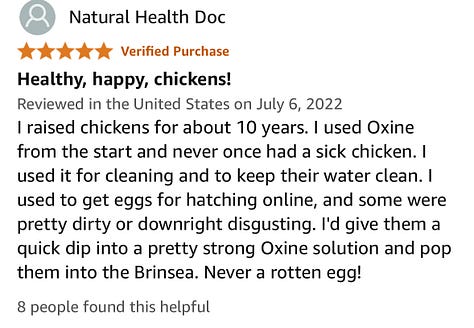
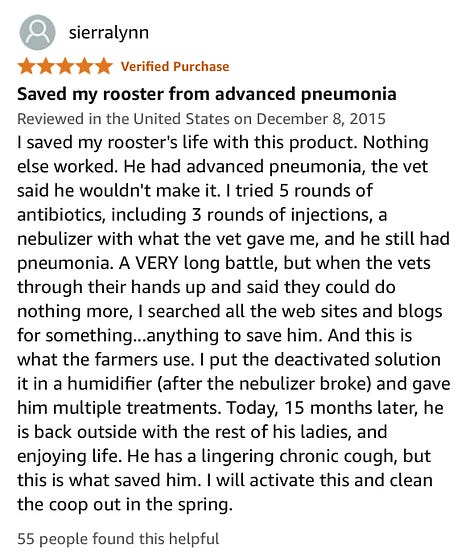
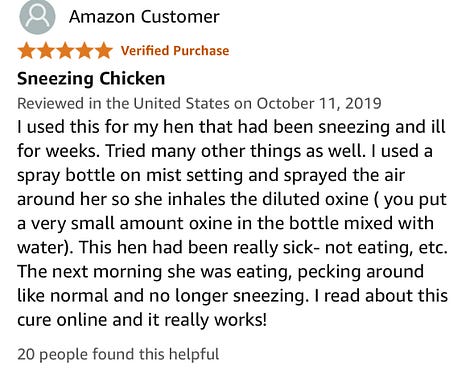
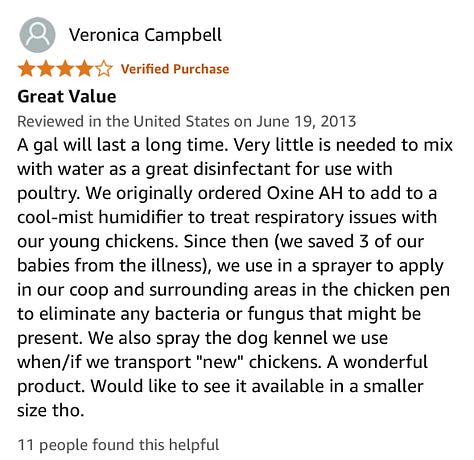
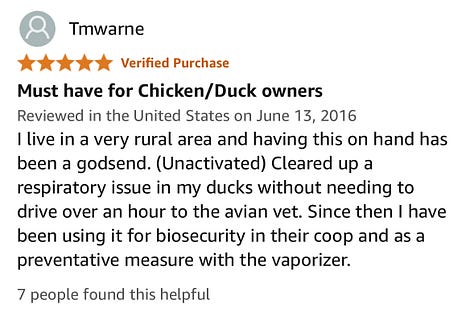
Given these positive results, I see no reason why this method wouldn’t be effective for humans as well. To illustrate its potential application, I am demonstrating how I use this form on myself.
MMS Method:
Add 1-2 drops of unactivated MMS to the nebulizer chamber.
Add 10 mL of normal saline to the nebulizer chamber.
Turn on the nebulizer and breathe in the aerosol mist for 10 to 15 minutes.
Repeat this process at least three times per day.
Method 2
Nebulizing Activated Sodium Chlorite (MMS1)
Between 2020 and 2021, I worked in an intensive care unit, caring for patients with severe respiratory failure and distress. After each shift, I would use nebulized MMS once nightly. I have employed this method numerous times without experiencing any side effects or lung irritation. Based on my experience, I can attest that it is safe at the doses I demonstrate in the video above. I also created another video about this method at the time, which can be accessed via this link: How to Use Chlorine Dioxide (MMS1) for Respiratory Illness with Nebulizer Machine
There are several studies involving animals and humans that have used aerosolized chlorine dioxide in the form of acidified sodium chlorite. For example, in an animal model, mice exposed to influenza showed a significant difference in outcomes: none of the mice treated with chlorine dioxide died after 16 days, compared to seven out of ten deaths in the untreated group (P=0.002). [6] Additionally, a study in Japan found that dispersing low concentrations of chlorine dioxide throughout classrooms significantly reduced absenteeism among school children during the study period. [7]
MMS1 Method:
In a small medicine cup, activate 1 drop of MMS.
Add 120 mL of normal saline to the 1 activated drop. This will give you the 10 PPM stock solution that you will use for this nebulizer session.
Pour the contents into the nebulizer chamber.
Turn on the nebulizer machine and breathe in the aerosol mist for three minutes.
Turn off the nebulizer and empty the contents of the nebulizer chamber.
Add 10 mL of the stock 10 PPM solution to the nebulizer chamber.
Turn on the nebulizer machine and breathe in the aerosol mist for three minutes.
Repeat the process above for a total of 10 to 15 minutes. Can be performed three or more times per day.
Method 3
Nebulizing Chlorine Dioxide Solution (CDS)
This method uses Chlorine Dioxide Solution (CDS) in its pure form, consisting solely of chlorine dioxide dissolved in saline. For instructions on how to prepare concentrated CDS 3000, please refer to the article titled How to make CDS.
A 2017 animal study conducted an inhalation toxicity test, where subjects were exposed to 20 PPM of humidified chlorine dioxide for 24 hours. The results showed no abnormalities or mortality, with normal clinical symptoms and functioning of the lungs and other organs. [8] The method described here involves creating a diluted solution that will provide approximately 10 PPM for use in a nebulizer.
CDS Method:
Add 10 mL of saline to the nebulizer chamber.
Add 1 to 3 drops of CDS to the nebulizer chamber.
Turn on the nebulizer and nebulize for 3 to 4 minutes until you no longer see any yellow color in the solution in the nebulizer chamber.
Turn the machine off and add 1 to 3 drops of CDS to the nebulizer chamber in the same solution.
Turn the machine on and repeat the process for 3 to 4 minutes. This process may be repeated to achieve a total treatment time of 15 minutes. Can be performed three or more times per day.
Editor’s Note: None of these nebulizer treatments should cause lung irritation. They should not make you cough or feel uncomfortable. If you experience lung irritation, coughing, or discomfort, reduce the number of drops being used.
Nebulizer Machine Recommendations
I prefer a plugin nebulizer machine like this one. Most brands are fine
Portable Nebulizer with attachments
This nebulizer is more compact but just as efficient. The battery may run out while in use though.
Don't get hung up on brands or specific ones. Just get one and have it ready. They're all comparable.
Sources
Oxine EPA Document. https://www3.epa.gov/pesticides/chem_search/ppls/009804-00001-20241204.pdf
Upper Respiratory Fungal Infections that Effect Chickens. https://shagbarkbantams.com/upper-respiratory-fungal-infections-that-effect-chickens/
The Many Uses of Oxine AH (Animal Health). https://shagbarkbantams.com/the-many-uses-of-oxine-ah-animal-health/
Help oxine | BackYard Chickens https://www.backyardchickens.com/threads/help-oxine.1177470/
OXINE seems fabulous. Users please share usage, dosage, storage ... https://www.backyardchickens.com/threads/oxine-seems-fabulous-users-please-share-usage-dosage-storage-etc.562407/
N, Shibata T. Protective effect of low-concentration chlorine dioxide gas against influenza A virus infection. J Gen Virol. 2008 Jan;89(Pt 1):60-67. https://www.microbiologyresearch.org/content/journal/jgv/10.1099/vir.0.83393-0
Ogata, Norio & Shibata, Takashi. (2009). Effect of chlorine dioxide gas of extremely low concentration on absenteeism of schoolchildren. International Journal of Medicine and Medical Sciences. 1. 288-289. https://citeseerx.ist.psu.edu/document?repid=rep1&type=pdf&doi=299078bd82d100dc379e593c972ad244e2a11cd7
Ma JW, et al. Efficacy and Safety Evaluation of a Chlorine Dioxide Solution. Int J Environ Res Public Health. 2017 Mar 22;14(3):329. https://pmc.ncbi.nlm.nih.gov/articles/PMC5369164/



My mom is currently nebulizing MMS 3x/day and doing two daily baths with 100 drops MMS+DMSO each, and it has helped her turn the corner on her MAI/Lady Windermere syndrome in dramatic, measurable ways. She stopped oral dosing because it was becoming too difficult to work in meals and she was becoming intolerant of the taste (although using Sweetleaf strawberry-kiwi stevia drops worked great for that).
Thank-you. I have been using MMS/CDS for 6 years and was trying to figure out the ratios for the nebulizer. Previously I was using food grade H2O2.